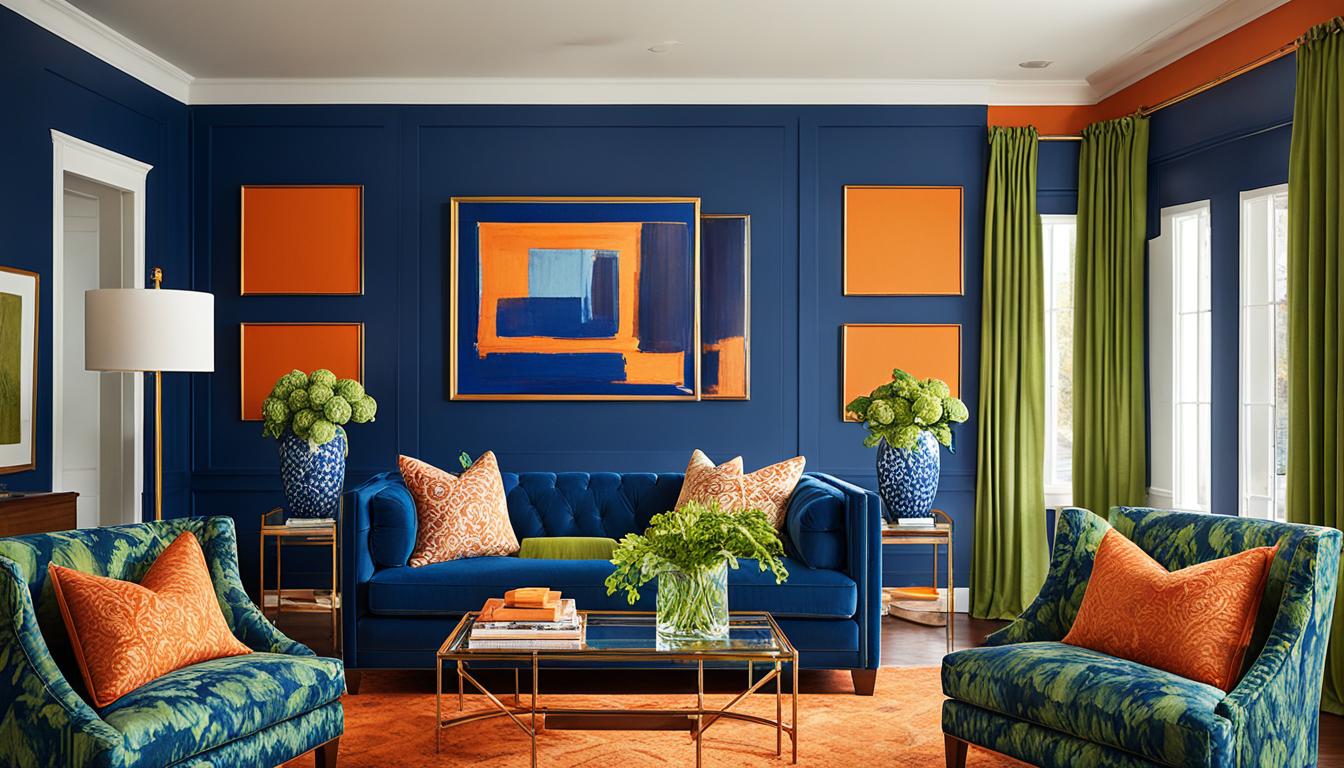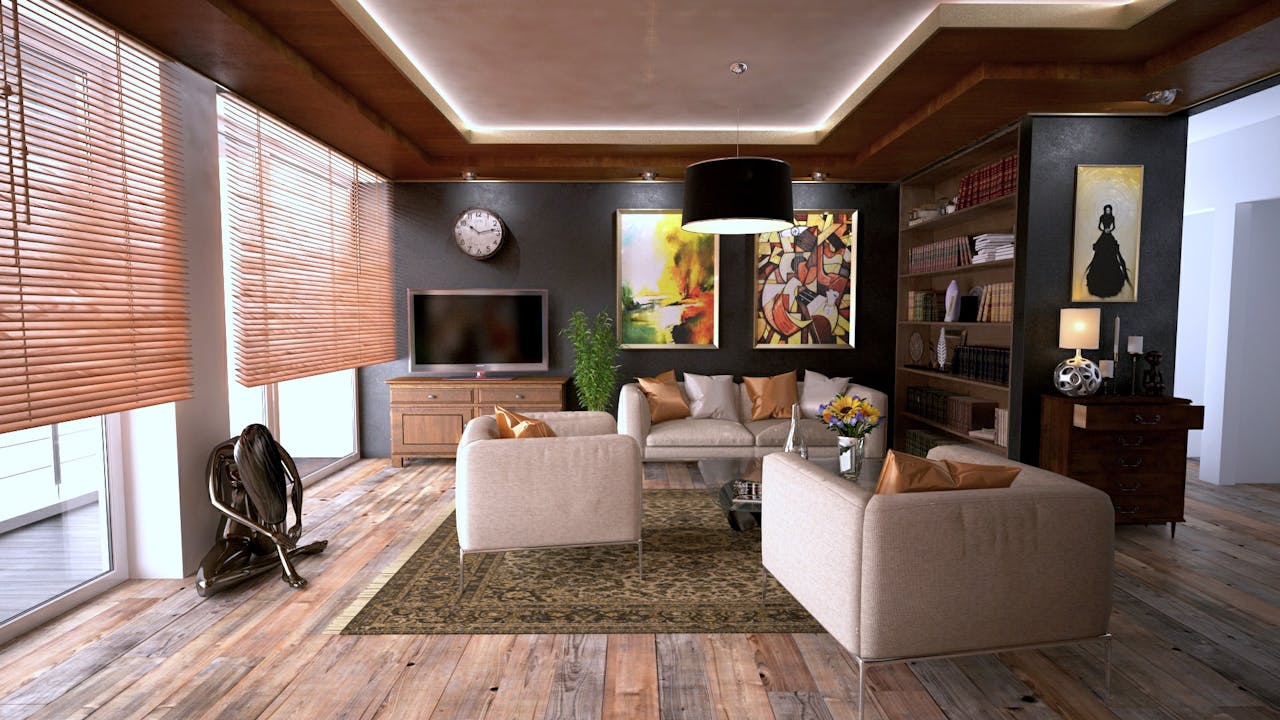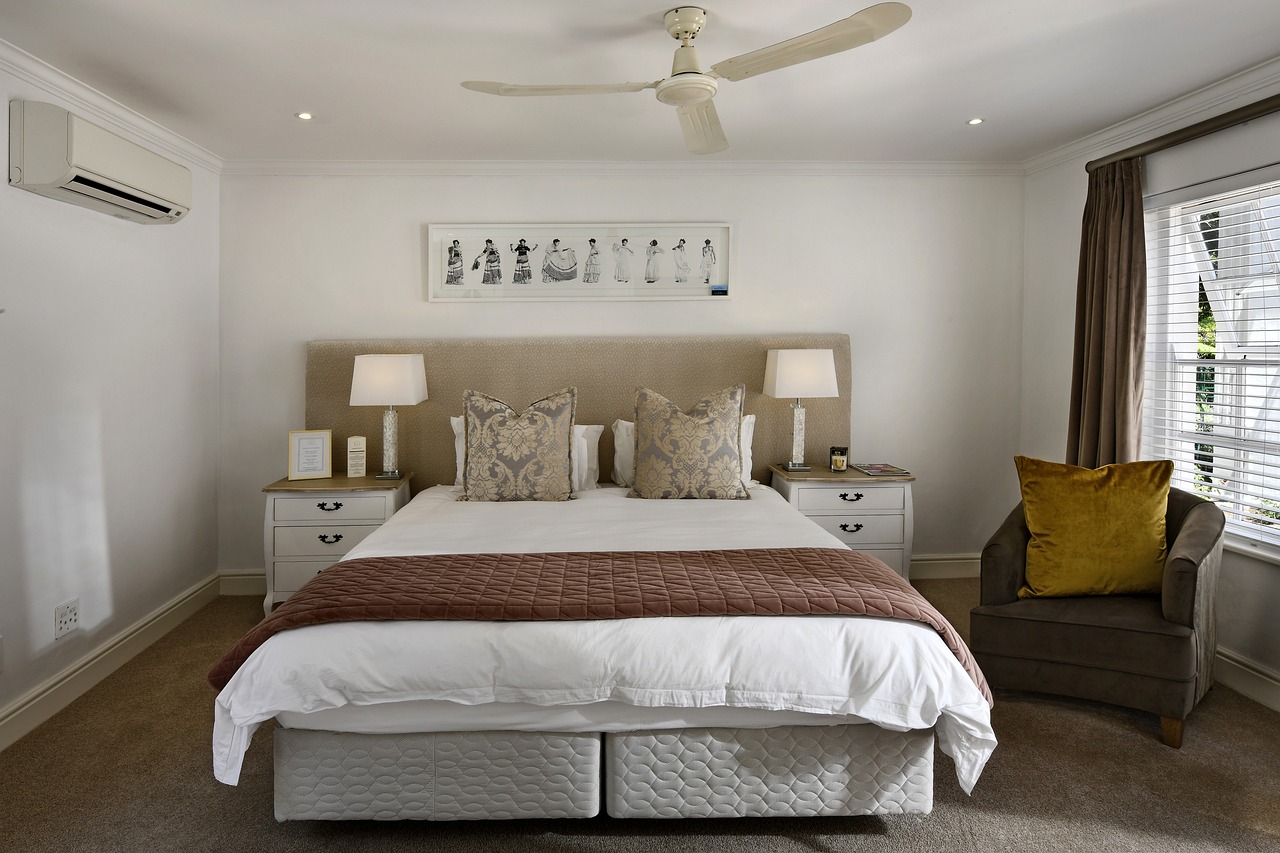Choosing the perfect color scheme can change how your home looks and feels. Whether you’re redoing your space or starting fresh, knowing about color psychology and design trends is key. This guide will help you pick the right colors for your home, including interior design colors and paint palettes. It will also show you how to mix colors for different rooms.

Key Takeaways
- Understand the emotional impact of colors and how they can influence the mood and atmosphere of a room
- Explore the differences between warm and cool color palettes and how they can create distinct ambiances
- Discover harmonious color combinations that can unify the overall look and feel of your home
- Learn about timeless neutral shades, such as beige and greige, that can provide a versatile foundation for your design
- Investigate modern color trends and how to incorporate them into your home with accent wall colors and complementary color pairings
Embrace the Power of Color Psychology
Colors deeply affect our feelings and how we see a space. Knowing color psychology helps pick a color scheme that brings the right emotions. Warm colors like red, orange, and yellow make a room lively and cozy. Cool colors like blue, green, and purple calm us down and make us feel serene.
Understanding how colors change the mood of a room lets you create the perfect atmosphere for every area in your home.
Understanding the Emotional Impact of Colors
Each color has its own emotional impact. Red stirs up passion, energy, and excitement. Blue is calming and helps us think deeply. Green brings balance, growth, and harmony. By knowing these effects, you can use colors to set the ambiance you want in your home.
Warm vs. Cool Colors: Creating the Desired Ambiance
- Warm colors like red, orange, and yellow make a space lively and welcoming.
- Cool colors like blue, green, and purple create a peaceful and calm mood.
- Choosing the right color temperature in each room changes the emotional impact and desired ambiance of your home.
Using color psychology in home design changes how we feel in our spaces. By picking warm and cool colors, you can make your home look great and meet your needs.
Harmonious Color Combinations
Creating a visually appealing interior design is all about choosing harmonious color schemes. By using color theory, you can find complementary color pairings and color palettes for homes that make your spaces stand out.
Analogous colors are great for a smooth look. They are next to each other on the color wheel. For example, blue, green, and turquoise together create a calm feel.
Complementary colors are across from each other on the wheel. They work well together, like red and green or yellow and purple. The goal is to keep everything balanced so no color takes over.
If you want a simple yet elegant look, try a monochromatic color scheme. Use different shades of one color for a cohesive feel. Play with light and dark versions to add depth to your color palettes for homes.
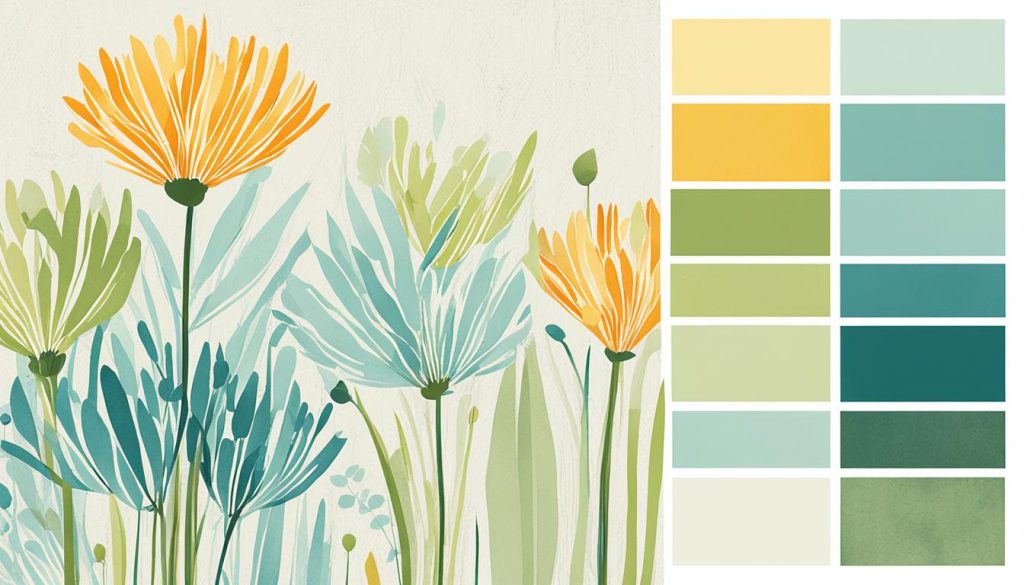
Creating harmonious color schemes is about balance and style. By mixing colors and thinking about their mood, you can make a space that looks great and feels like home. It’s a way to show off your style and make your home special.
Timeless Neutral Shades
Timeless neutral shades are perfect for a calm and lasting look in your home. Shades like beige, greige, and classic white bring a sophisticated feel. They also make your space welcoming and timeless.
Versatile Beige and Greige Hues
Beige and greige are key to neutral color schemes. They add warmth and make your space inviting. You can easily mix them with many accent colors, whether you like it subtle or bold.
Classic White for a Fresh Look
Classic white is great for a clean, airy feel. It’s a blank canvas for adding colors and textures. White works well with many styles, making it a lasting choice for any home.
| Neutral Shade | Ambiance | Complementary Accents |
|---|---|---|
| Beige | Warm and inviting | Blues, greens, and metallics |
| Greige | Sophisticated and versatile | Jewel tones, pastels, and natural elements |
| Classic White | Fresh and airy | Bright accents, natural wood, and textural layers |
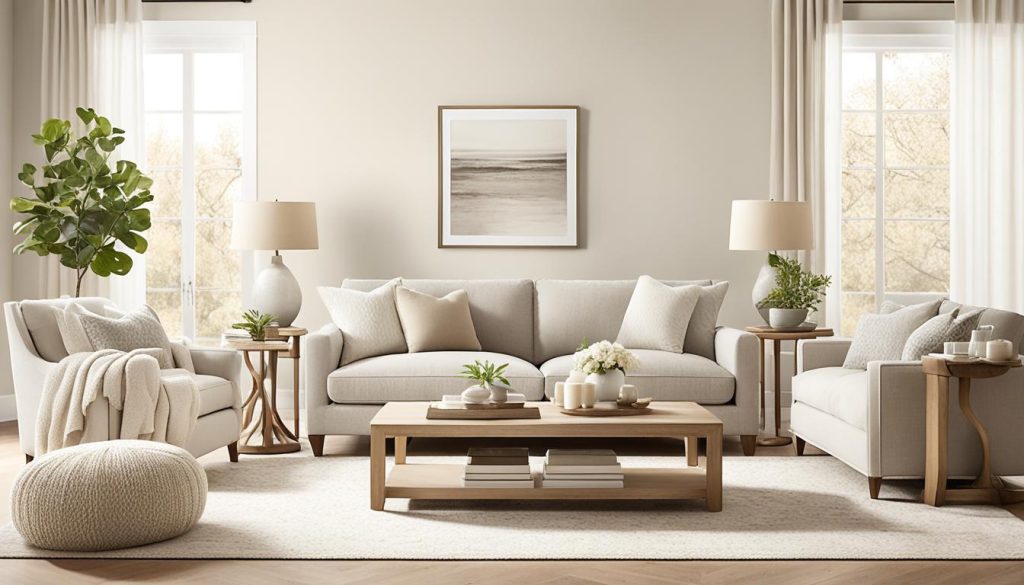
Using these neutral shades in your home creates a peaceful and welcoming space. Whether you choose beige’s warmth, greige’s sophistication, or white’s classic look, these colors are timeless and versatile.
Accent Wall Colors
Accent walls are a great way to add bold colors to your home. They make a room stand out. By choosing a painted accent wall, you can change the feel of a space. It can match your color scheme perfectly.
Bold and Vibrant Statements
Don’t hesitate to try bold and vibrant hues for your accent walls. Deep blues in the bedroom or bright yellows in the living room can make your home lively. Pick a color that goes well with your other colors and stands out.
Here are some tips for accent wall colors that make a statement:
- Choose rich colors like emerald green, royal blue, or fiery red.
- Use high-contrast colors for a striking look, like deep charcoal with bright white.
- Add depth with patterned or textured wallpaper for more interest.
The right accent wall colors can change a room. They make the design look better and add a unique personality. Try bold and vibrant colors to show off your style.

Home Color Scheme
Creating a harmonious home color scheme is key to a cohesive and pleasing interior. By picking complementary hues, you can make your living spaces look better and feel united. This makes your home look more put together.
To make a good home color scheme, know the basics of interior design colors and paint color palettes. Start with colors you like and build your palette around them.
When picking your home color scheme, mix neutral and accent colors. Neutral colors like beiges, grays, and whites are great for a base. They work well with bold or soft colors for added interest.
Think about your home’s natural light and its look when choosing paint color palettes. Some colors change with the light, and your furniture and decor can affect how they look too.
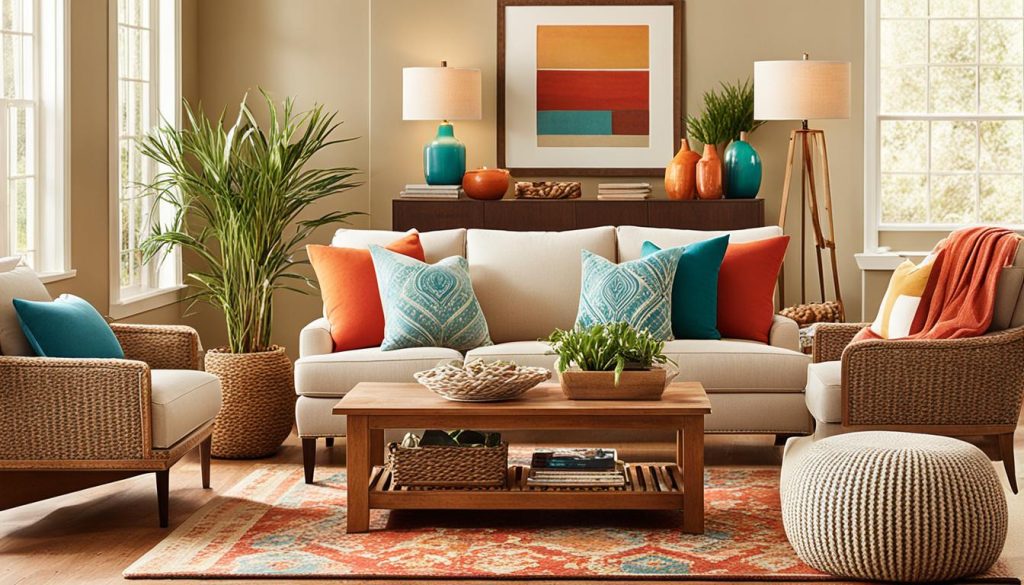
- Keep a consistent color theme in your home, using similar or matching colors in nearby rooms.
- Try out different color mixes, like analogous, complementary, or monochromatic, to find what works best.
- Add various textures, materials, and patterns to make your interior design colors more interesting.
- Use accessories, art, and other items to spotlight and support your home color scheme.
With a well-thought-out home color scheme, you can make your living space look and feel great. It will show off your style and make your home more welcoming.
Room-by-Room Color Considerations
Choosing colors for your home means thinking about what each room needs. Each room has its own special purpose. By picking colors that fit the room’s character, you make your home look and feel better.
Relaxing Bedroom Color Palettes
For bedrooms, go for calming colors that help you relax. Soft blues, peaceful greens, and natural tones create a calm space. These colors make it easier to fall asleep and wake up feeling new.
Energizing Kitchen Color Schemes
Kitchens need colors that make you feel lively and creative. Bright reds, happy yellows, and fresh greens do just that. They make the kitchen look great and help you feel excited to cook.
| Room | Recommended Color Palette | Benefits |
|---|---|---|
| Bedroom | Soft blues, tranquil greens, earthy tones | Promotes relaxation and sleep |
| Kitchen | Vibrant reds, sunny yellows, fresh greens | Stimulates the senses and inspires culinary creativity |

Think about what each room is for to pick the right colors. This way, you get a color scheme that makes your home feel welcoming and useful. Whether you want a calm place to rest or a lively spot to work, the right colors can make it happen.
Modern Color Trends
Timeless shades and classic color mixes will always be in style, but keeping up with modern color trends is key. Today’s color palettes include bold, jewel-toned accents and earthy, nature-inspired colors. These can make your home look fresh and modern. Try out new color combinations to make your home stylish.
Recently, rich, saturated colors have become very popular. People love adding bold, jewel-toned accents like deep emerald greens and luxurious amethyst purples. These colors look great with neutrals, creating a sophisticated look.
Another big trend is using nature-inspired colors. Shades like terracotta, sage, and ochre bring a calm feeling. They’re great for making rooms like the bedroom or living area feel peaceful.
Using contrasting colors is also popular for adding interest to rooms. For example, pairing mustard yellow with deep teal or blush pink with charcoal gray is trendy. These bold combinations add personality to any room.
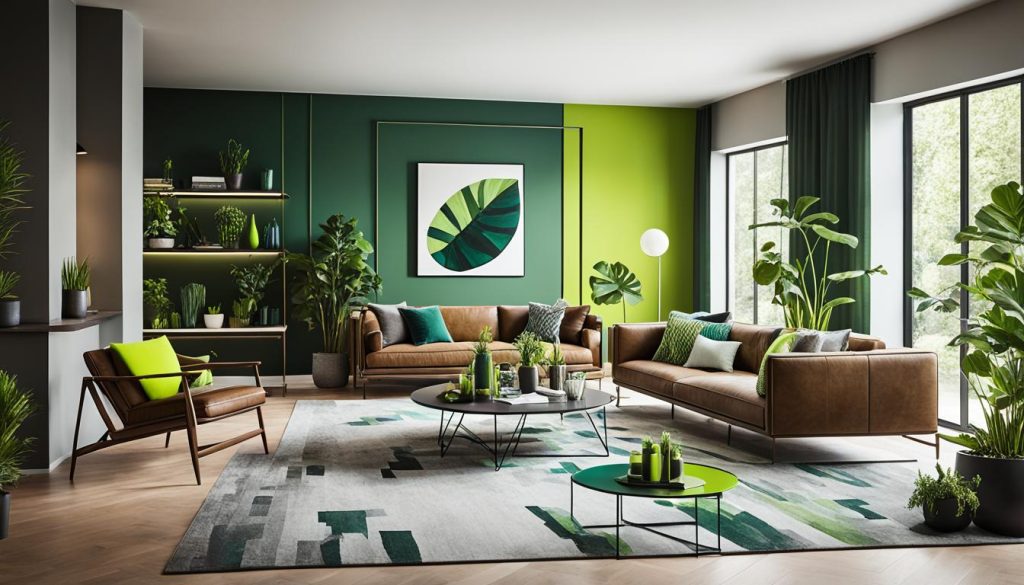
The latest modern color trends offer a wide range of options. From rich jewel tones to nature-inspired colors and bold combinations, there’s something for everyone. By trying out these popular color schemes, you can make your home stylish and personal.
Complementary Color Pairings
Choosing the right colors for your home can change everything. Exploring complementary color pairings is a great way to make your interior pop. These colors, opposite each other on the color wheel, create a dynamic and captivating look.
Finding the Perfect Balance
With complementary color pairings, finding the right balance is key. These bold colors add vibrancy and contrast but can be overwhelming if not balanced right. The trick is to use one color as the main shade and the other as an accent.
For example, a room with vibrant blue as the main color and warm, earthy orange accents looks stunning. This mix creates a perfect color balance that’s both visually striking and harmonious.
Or, you could use vivid green walls with bold, fiery red furniture. This bold choice makes a statement and adds energy and personality to your space.
Mastering complementary color pairings means experimenting to find the right balance. This should match your style and the look you want for your home.

“The true essence of harmony in design lies in the perfect balance of complementary colors.”
| Complementary Color Pair | Suggested Application |
|---|---|
| Blue and Orange | Vibrant and energetic, great for accent walls or furniture |
| Green and Red | Bold and striking, ideal for creating a focal point in a room |
| Purple and Yellow | Sophisticated and regal, well-suited for formal spaces |
Conclusion
Making the perfect home color scheme is a rewarding journey. It lets you turn your living spaces into vibrant, harmonious places that show off your style. By using color psychology, exploring timeless shades, and following modern trends, you can make a home that fits your taste and needs.
The secret to a great home color scheme is finding colors that work well together. These colors should improve the look and feel of your spaces. You can choose bold, bright walls or calming colors that help you relax. Your color choices greatly affect the mood and feel of each room.
By applying the principles of creating harmonious spaces, you can make your home a sanctuary. It will reflect your style and inspire you every day. Trust your gut, try out different colors, and let your home show off your unique vision.
FAQ
What is the importance of understanding color psychology in home design?
Color psychology is key when picking home colors. Colors affect our feelings and how we see a space. Warm colors like red, orange, and yellow make a room feel lively and cozy. Cool colors like blue, green, and purple calm us down and make spaces serene.
Knowing how colors impact mood helps you design the perfect atmosphere for each room.
How can I create a harmonious color scheme for my home?
To get a harmonious color scheme, pick colors that go well together. Try different combos like analogous (next to each other on the color wheel), complementary (opposite each other), and monochromatic (various shades of one color). This way, you’ll find the perfect palette for your home.
Finding the right mix of colors makes your interior design look cohesive and appealing.
What are some timeless neutral shades that I can incorporate into my home color scheme?
Neutral colors like beige, greige, and white are timeless and versatile. Beige and greige add warmth and sophistication. White gives a clean, fresh look that pairs well with many colors.
Using these neutral tones makes your home feel serene and welcoming.
How can I use accent walls to add visual interest to my home?
Accent walls are great for adding color and interest. Use bold, vibrant colors that match your scheme to make a room pop. A deep blue in the bedroom or a bright yellow in the living room can change the mood and feel of a space.
How do I develop a cohesive home color scheme?
For a cohesive color scheme, think about the flow and harmony of colors in your home. Start with colors you like and build your palette around them. Add neutral and accent colors for interest and balance.
Consider the lighting, furniture, and architecture when choosing your colors.
How do I choose the right color scheme for different rooms in my home?
Pick a color scheme based on the room’s needs and functions. For bedrooms, go for calming colors like soft blues, greens, or earth tones. In the kitchen, bright colors like reds, yellows, or greens can boost creativity.
Choosing colors that suit each room’s unique character improves your home’s harmony and function.
What are some modern color trends I should consider for my home?
While classic colors are timeless, staying current with trends is good too. Modern trends include bold accents and earthy colors. Try new color combinations to make your home look stylish and contemporary.
How can I use complementary colors in my home design?
Complementary colors opposite each other on the color wheel create a dynamic look. But be careful not to overdo it. Use one color as the main shade and the other as an accent to achieve a balanced, captivating look.

